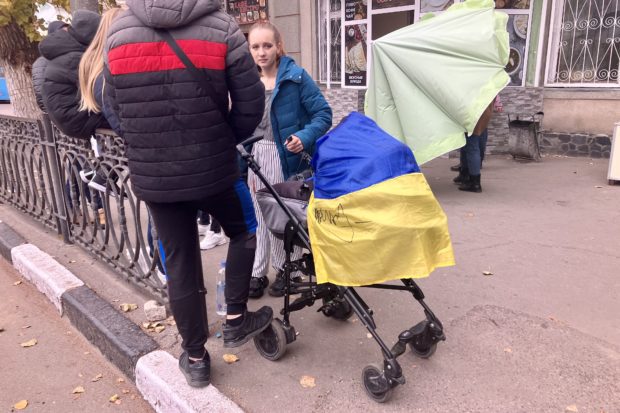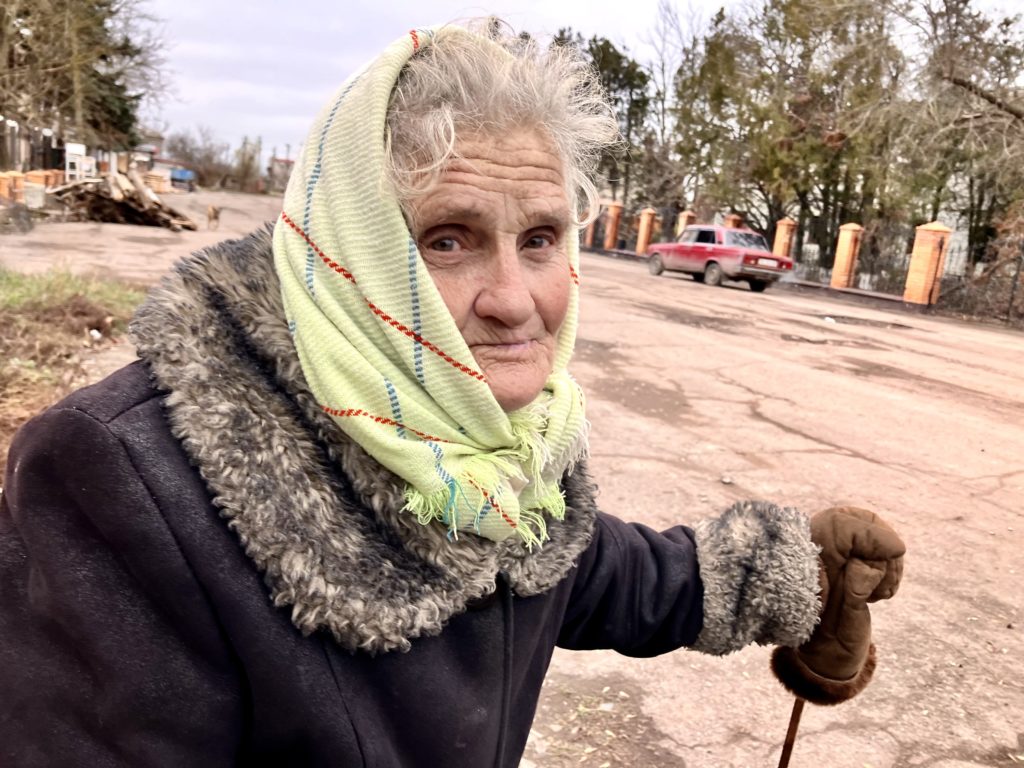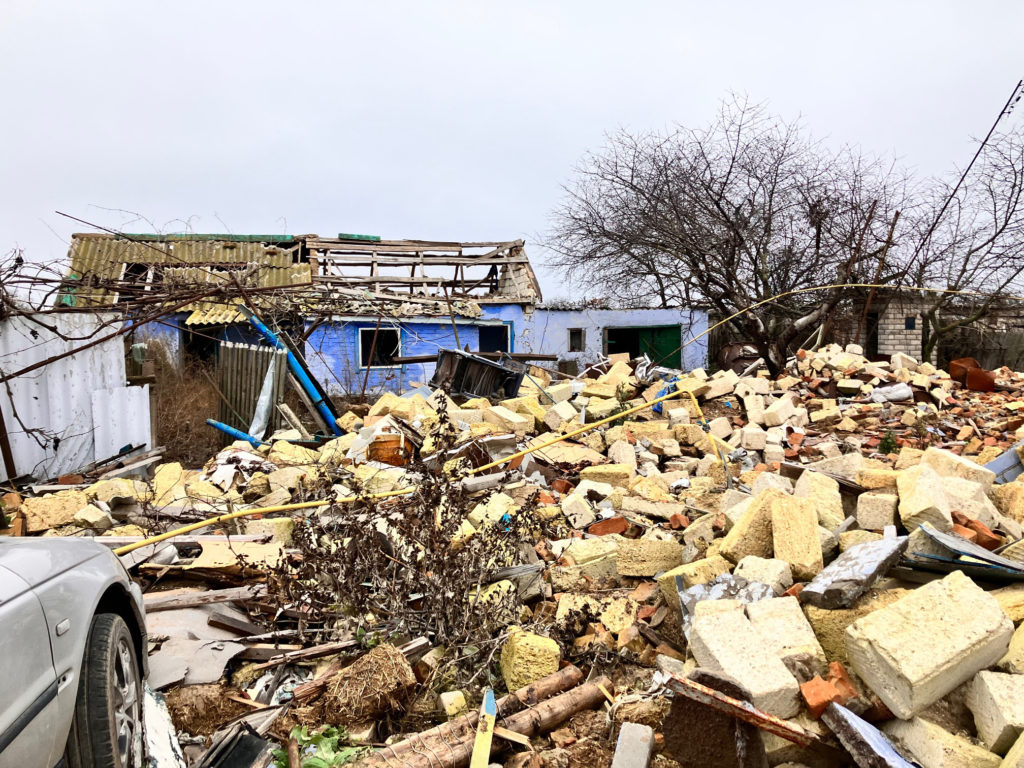
Kherson, a southern Ukrainian city of 250,000 before the full-scale Russian invasion, was under Russian occupation since March 2, 2022. After its liberation on Nov. 11, the author visited the city of Kherson and the region and spoke with many locals about their life under the occupation.
Kherson
In occupied Kherson, residents avoided going outside at all costs. Russian armored vehicles marked with the letter “Z” were patrolling the streets and squares, with armed soldiers seated on top. Bags were searched at checkpoints.
“The daughter of our neighbor and her friend were arrested,” said an elderly man. “Their daughter was released a week later, but her friend has not been found. We don’t know where she is.”

“It was dangerous to be inside, even in your own house,” said a woman who came to celebrate the liberation in the central square. “The Russians could break into the courtyard during the day or at night. They could have held you up for a phone transaction after checking your account.”
During the occupation, the Russians blocked Ukrainian television channels and social media channels. The residents of Kherson and the region could only watch Russian television. Russian propaganda posters encouraged Kherson residents to vote in a referendum to join the Russian Federation, promising a bright future forever with Russia.
“When they held their ‘referendum,’ a woman with a ballot box walked the streets, followed by two men with Kalashnikovs. People didn’t open their doors. I personally did not see a single person who would vote,” shared Victoria, an employee of a small café.
The café was not operational, as there was no water, electricity and heat and not enough food, but people gathered inside and outside.
“Everyone was hiding,” Victoria continued. “Kherson was like a ghost town.
“This whole referendum was a circus. They knew their numbers even before the referendum because at the very beginning of the occupation, we had a massive pro-Ukrainian protest. The Russians rode on top of their armored vehicles, and everyone shouted to them: ‘Go home!’ They knew very well that this is a pro-Ukrainian region.”
Several patrons of the café said that in areas near the city dump, residents smelled burnt hair and flesh and that the corpses of both Russian military and Ukrainian civilians were burned there.
One young man, Ivan, said that in the spring the Russian military arrested him, with a bag over his head, and took him to a basement where they tortured him with electric shocks, strangled and beat him, demanding a confession for carrying out intelligence activities in favor of Ukraine. Ivan did not confess, and they let him go, taking him to the outskirts of town with a bag on his head.
Another young man, Dima, who was kept in the basement of the National Police Headquarters for 75 days, was tortured with electric shock, beaten with a baton and a pipe, and was not fed for several days. They covered his head with duct tape, and fired over his head, using blanks, and threatened that the next shot would be to the head.
There was a torture chamber next to Dima’s cell. The cries of the victims and the laughter of the Russian military were heard from it in the morning and evening.
At least four places of torture and several mass graves were found in the Kherson region where the investigation of the Russian war crimes continues.

Kherson Oblast
In the village of Posad-Pokrovske, every building was destroyed or badly damaged by shelling.
“Only 30 people or so are left,” said Serhiy, a man in his late 40s. “Ten were killed; I knew all of them. One child. My classmate’s father.
“Three guys drove to the nearby village Chornobayivka. All were shot on Feb. 26. Right there, on the lake, my neighbor’s legs were torn off by a mine and he died on the way to the hospital in Mykolaiv.
“Recently, a man tried to disassemble a shell, and it tore him apart. The village is still mined. The sappers cleared around a bit so there was an opportunity to drive around. Yet, in the kitchen gardens, you see cluster shells sticking out of the ground.
“My house is completely destroyed. Burned to ashes. Nothing is left. On July 7, our whole street was burned down by a phosphorus bomb, and only one house survived. I live in my father’s house. We need everything, from building materials to furniture.”
Mariya, in her 80s, stood in the central square in freezing temperatures, waiting for volunteers’ bread delivery. Her house was destroyed, too, and her family now lives in ruins.
“On February 25, tanks entered here,” Mariya said. “In July, a Russian tank shot at our calves, burned the first one alive and broke the second calf’s leg. They shot day and night. During the day, at 10 a.m., 12 p.m. and 2 p.m., from behind the bridge, and that’s when they hit my house.
“I heard a strong explosion. It blew off the roof, and the slate flew in every direction. It was very scary. Now, when it rains, it leaks. We [haven’t had] running water, electricity and heat for months.”
In Pravdyne, Kherson Oblast, a teenage girl and seven young men were brutally killed by the Russian occupants.
Galina, a neighbor, said that the Russian collaborator Victor Khalak in the past had served a term in prison for brutally killing and beheading his father, and during the war was consistently raping his stepdaughter Victoriya Volokhova, 15, and his biological daughter, nine.
When Victoriya started to date a Ukrainian security guard, Khalak got jealous and reported all seven security guards to the Russian occupational authorities, falsely claiming they were Ukrainian military. Young men from Kyiv, Kherson Oblast and Donetsk had been hired by local farmers before the war to watch tractors, grain and other valuables.
On April 18, 2022, at the edge of the village, the Russian military tied up the guards’ arms, blindfolded them and shot them in their foreheads, according to the villagers’ accounts. Victoriya was also killed and the house was blown up.
The Russian occupants did not let local residents bury the remains and put tripwires around the open grave. The decomposing bodies were being pulled apart by dogs, and, eventually, locals were allowed to bury them in the yard.
After the liberation, the Ukrainian police exhumed the remains and took them for DNA tests. Serhiy, a young man who helped to exhume the bodies, said, “The bodies were just bones by then, but you could see that three of them had ropes around their arms. The police found the holes in the skulls of three victims.”
Lena, a woman in her late 80s, lived right next to the security guards’ base and said that she saw the explosion. She also said that the Russian military was constantly shooting at her house from across the canal as she and her family were planting potatoes.
Another neighbor, a young father of two, was blown to pieces in front of Lena’s house. As the Russians were retreating, they looted carpets, bedding, sofas and beds.
“Thank god, we were saved by the Ukrainian army,” she said.
“Life here in Pravdyne was hard during the occupation,” commented a group of women in the central square of Pravdyne. “We didn’t have a connection with our relatives.
“We helped each other in any way we could. Many of our village folks have left, especially those who had kids.
“Only five kids were left. When Russians arrived and asked where were Ukrainian soldiers, one four-year-old said, ‘I am a Ukrainian!’”

